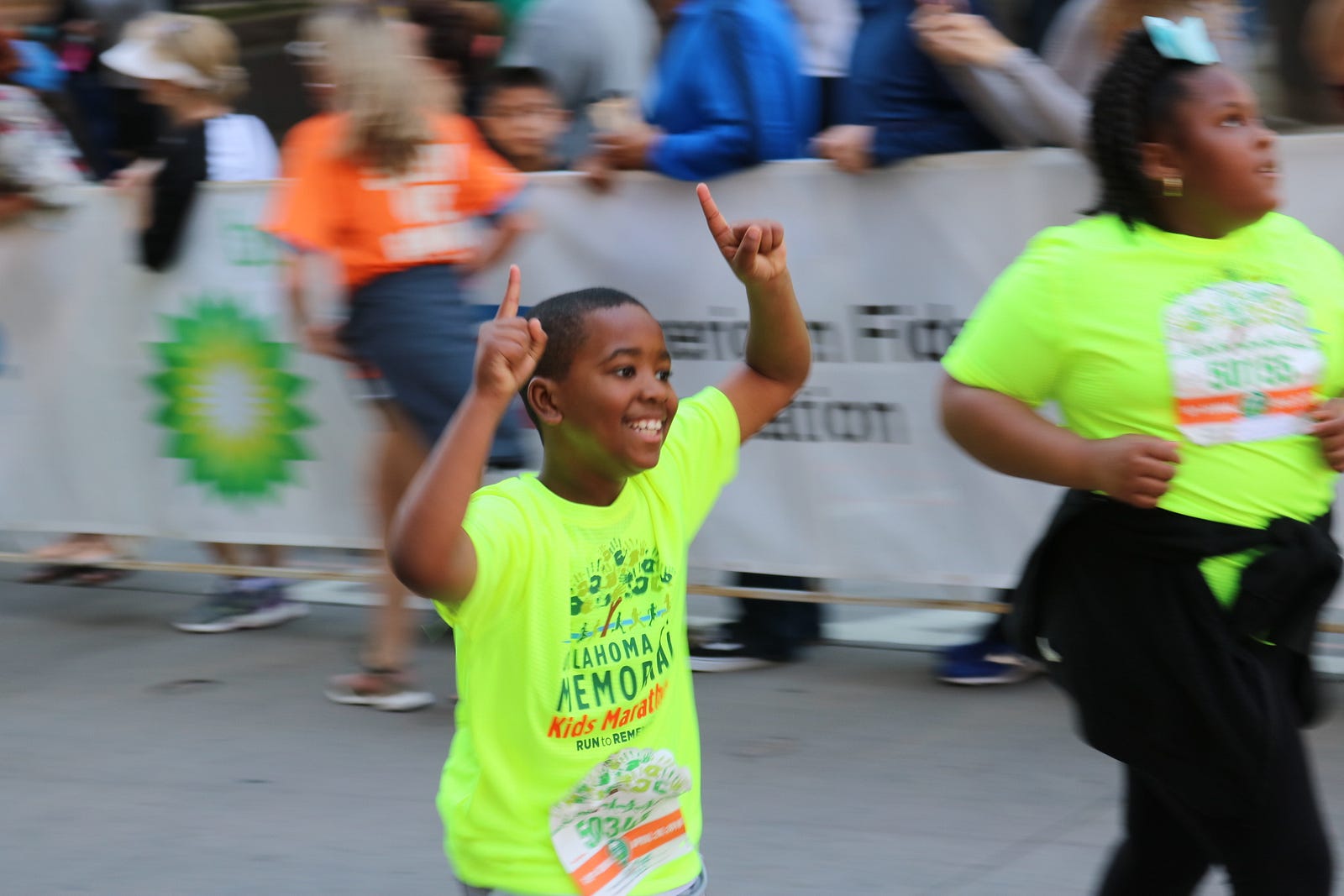A Run to Remember: The Purpose Behind the Oklahoma City Memorial Marathon

The Oklahoma City Memorial Marathon attracts the world’s top runners and conveys an uplifting message of hope and resilience, all while striving for a more-informed, peaceful word.
On April 29th, I got to witness a myriad of powerful emotions. I saw victory, perseverance, joy, and teamwork all aligning within one spirit of gratitude. The Oklahoma City Memorial Marathon’s real, moving notion is this: it involves all sorts of people doing good for each other. The Marathon is a beacon of hope to the city, as it symbolizes and initiates the winning spirit instilled in Oklahoma’s people. The Marathon, an event held by the Oklahoma City National Memorial, a fascinating museum that reflects on the lives lost in the Alfred P. Murrah Federal Building Bombing, strongly inflicts a lively message of hope and teamwork. To know the power of the Memorial Marathon, one should know the story behind it’s conception. So here it is.
On April 19th, 1995, Timothy McVeigh, an anti-government conspirator and former military officer, drove a Ryder truck beside the entrance of the Alfred P. Murrah Federal Building that contained over 7,000 pounds of ammonium nitrate fertilizer, diesel fuel, and nitromethane. At 9:02 A.M., the truck exploded, destroying a third of the government building. The Alfred P. Murrah Federal Building housed the Oklahoma offices of the D.E.A., the A.T.F., the Social Security Administration, the Secret Service, and the Veterans’ Affairs rehabilitation department. The explosion took 168 people’s lives, 19 of them under six years old.
Timothy McVeigh was inspired to carry out this terrorist attack, which remains the largest act of domestic terrorism on the United States to this day, by what he thought to be the government’s mishandling and intervention of the Branch Davidians at the Waco Siege, and the shootings at Ruby Ridge.
Others knew of McVeigh’s plans, including military confidant Terry Nichols, who carried out the bombing with McVeigh and aided him by building the explosive and arranging a getaway car for McVeigh. Another man, Michael Fortier, knew of McVeigh and Nichols’ plans but did not tell any authorities. McVeigh and Nichols met in the military and immediately befriended each other; they were both radical survivalists who were extremely anti-government.
After the explosion, McVeigh was stopped just outside of Perry, Oklahoma for not having a license plate on his getaway car, a 1977 Mercury Marquis, by Charlie Hanger. McVeigh, after constant lying, told said one true statement: He told Hanger that he had a gun on his waist and it was loaded. Hanger then responded “So is mine.” and arrested McVeigh on the spot for unlawfully carrying a concealed weapon. The next morning, police tracked McVeigh by seeing the vehicle I.D. number on the axel of the Ryder Truck, prompting authorities to track down the rental agency and later the motel McVeigh stayed in.
McVeigh was sentenced on 11 federal counts, and received the death penalty. He was executed in 2001 by lethal injection in Terre Haute, Indiana. McVeigh chose William Ernest Henley’s “Invictus” as his final statement. It is worth noting what the poem says:
“Out of the night that covers me,
Black as the pit from pole to pole,
I thank whatever gods may be
For my unconquerable soul.
In the fell clutch of circumstance
I have not winced nor cried aloud.
Under the bludgeonings of chance
My head is bloody, but unbowed.
Beyond this place of wrath and tears
Looms but the Horror of the shade,
And yet the menace of the years
Finds and shall find me unafraid.
It matters not how strait the gate,
How charged with punishments the scroll,
I am the master of my fate,
I am the captain of my soul.”
Terry Nichols was sentenced to multiple life sentences and is currently being held in a maximum security prison in Florence, Colorado. Michael Fortier testified against Nichols and McVeigh in return for a reduced sentence. He served twelve years and is now a member of the Witness Protection Program. Fortier’s wife, Lori, was granted immunity from the F.B.I. in return for a testimony.
There’s an underlying reason why we gather to run and support each other on Marathon day. It’s more than a race. It’s a collaborative effort to make the world a better place. The Oklahoma City Memorial Marathon had approximately 25,000 total runners this year in all races, including runners from all 50 states and a plethora of countries. The Marathon is one of the optimal ways to remember the wonderful lives of the 168 victims of a senseless attack. It is the most special Marathon in the world today.

The Oklahoma City National Memorial’s mission statement perfectly epitomizes the efforts of the race, and the meaning of this article:
“We come here to remember those who were killed, those who survived and those changed forever. May all who leave here know the impact of violence. May this memorial offer comfort, strength, peace, hope, and serenity.”
You can visit the Oklahoma City National Memorial and its fabulously integrated and immersive museum. The memorial itself is breathtaking, too.